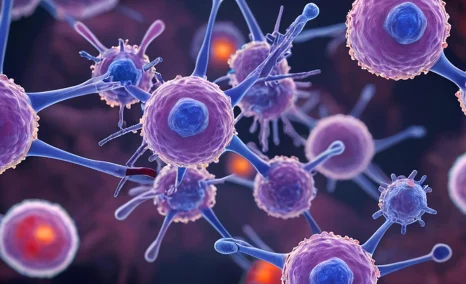Focal Segmental Glomerulosclerosis Market: Unfolding Insights into the Future
Sep 16, 2022
Currently, there are no FDA-approved therapies for FSGS. However, the therapeutic focal segmental glomerulosclerosis market in the seven major geographies mainly comprises off-label focal segmental glomerulosclerosis treatment options.
The off-label therapies majorly include nonimmune therapies in conjunction with immunotherapy. Nonimmune focal segmental glomerulosclerosis therapies include the control of blood pressure, lipids, and weight by prescribing angiotensin-converting enzyme (ACE) inhibitors and angiotensin II receptor blockers (ARB) to the patient.
For severe cases, patients are suggested to undergo plasma exchange accompanied by immunotherapy, including corticosteroids (prednisone), calcineurin inhibitors (cyclosporine and tacrolimus), mycophenolate mofetil, and biologics (rituximab). In cases where medications stop working, dialysis and kidney transplantation can remain the only option.
Downloads
Click Here To Get the Article in PDF
As per DelveInsight analysis, the Focal segmental glomerulosclerosis market size was found to be approximately 300 million in 2021 in the 7MM. Moreover, it is estimated to increase significantly at a considerable CAGR by 2032.
What are the current unmet needs in the focal segmental glomerulosclerosis market?
There is currently a dearth of epidemiological studies focusing on focal segmental glomerulosclerosis. Moreover, because of sizeable global variation in this indication, limited accessibility, and pathology support for kidney biopsy, the absolute incidence, and prevalence of the focal segmental glomerulosclerosis market are challenging to determine.
The focal segmental glomerulosclerosis market holds potential for novel drug candidates since the empirical focal segmental glomerulosclerosis treatment with corticosteroids or immunosuppressive agents is no longer defensible.
Conventional immunosuppressant therapies are often ineffective and commonly associated with toxicity due to the phenomenon of tachyphylaxis. There is an immediate need for personalized and promising therapies to treat patients in the focal segmental glomerulosclerosis market; therefore, there is a high demand for novel drug candidates focusing on producing patient-specific, considering both age and comorbidities.
What does the future of the focal segmental glomerulosclerosis market hold?
The prevalence of focal segmental glomerulosclerosis has increased over the past two decades, and increasing registries can predict multiple renal biopsies inviting several opportunities in the focal segmental glomerulosclerosis market.
As per our estimates, the prevalence of focal and segmental glomerulosclerosis in the 7MM was estimated to be approximately 200k cases, amongst which the US accounted for the highest number. Whereas Spain accounted for the lowest number of cases in 2021, however, it is expected to witness a sharp growth.
As per detailed secondary research, the disease is more pronounced in males than females across the major geographies, and overall, the cases are expected to shoot up to ~300k by 2032.
Furthermore, in recent years, the market has shown a strong focal segmental glomerulosclerosis pipeline portfolio with the active involvement of key players and organizations engaged in bringing novel treatments, majorly including Travere Therapeutics, Dimerix, Goldfinch Bio, Vertex Pharmaceuticals, Pfizer, Chinook Therapeutics, Inc., Genentech, Complexa, Imara, ZyVersa, Boehringer Ingelheim, Eli Lilly and Company, and others.

Following the mid-stage focal segmental glomerulosclerosis pipeline therapies that are available, including several potential drug candidates such as sparsentan (Travere Therapeutics), DMX-200 (Dimerix), GFB-887 (Goldfinch), VX-147 (Vertex Pharmaceuticals), PF-06730512 (Pfizer), CXA-10 (Complexa/Imara), obinutuzumab (Genentech), BI 764198 (Boehringer Ingelheim), baricitinib (Eli Lilly and Company), and VAR 200 (ZyVersa Therapeutics).
Travere Therapeutics’ only late-stage investigational candidate among the focal segmental glomerulosclerosis pipeline drugs is sparsentan. The company currently awaits eGFR data from its ongoing DUPLEX study, which is required to submit the market authorization application to seek accelerated approval. Moreover, the company anticipates a product launch by 2023 in the United States and European focal segmental glomerulosclerosis markets.
DMX-200 has completed the Phase II study, among other assets in the pipeline. Whereas the Phase III trial is about to initiate in the United States and Europe; although, the company anticipated regulatory submissions to initiate the Phase III focal segmental glomerulosclerosis clinical trial in the US and Europe in the quarter ending December 2021. The company has initiated a DMX-200 Phase III study in Australia.
Other mid-stage investigational agents include VX 147, an oral targets-specific apolipoprotein L1 (APOL1) inhibitor that acts with apolipoprotein L1 (APOL1)-mediated FSGS. The drug has demonstrated positive results in the proof-of-concept Phase II study. Moreover, the company plans to start a pivotal phase III study to pursue accelerated approval for focal segmental glomerulosclerosis treatment.
GFB-887, a precision-based, podocyte-targeting, small-molecule inhibitor of TRPC5, recently announced top-line results demonstrating a significant proteinuria reduction. The focal segmental glomerulosclerosis therapy offers targeted treatment, thereby potentially minimizing side effects. It is anticipated that launching such products will significantly delay the need for kidney dialysis/ kidney transplants.
Other therapies in the focal segmental glomerulosclerosis pipeline which are in the early stage of development include PF-06730512 (Pfizer), VAR 200 (ZyVersa), obinutuzumab (Genentech), atrasentan (Chinook Therapeutics, Inc.), BI 764198 (Boehringer Ingelheim), and baricitinib (Eli Lilly and Company).
The global burden of glomerulus-related disorders will push the demand for novel therapies resulting in an expected increase in the focal segmental glomerulosclerosis market size over the forecast period. The successful launch of these emerging drugs will change the treatment pattern in the nephrology area and provide a strong impetus for further research in other chronic kidney diseases.

FAQs
It is a clinicopathologic syndrome that is among nephrology’s most grinding and inexplicable diseases. It comprises the spectrum of idiopathic and secondary diseases that similarly affect the glomerulus and the kidney. In FSGS, focal depicts that certain filters in the kidney are scarred, and segmental means that scars are only found on some parts (or segments) of the affected filters.
The lesion of FSGS can be classified into primary (idiopathic) and secondary forms. The primary forms can be defined as having no defining cause and usually present as nephrotic syndrome. The secondary form is an adaptive phenomenon that includes familial/genetic forms, virus-associated forms, drug-induced forms, and forms mediated by adaptive structural-functional responses. It is further classified as tip, cellular, perihilar, and collapsing focal segmental glomerulosclerosis.
Medical history and clinical examinations are the first steps taken in patients suspected of having FSGS.; Laboratory tests for focal segmental glomerulosclerosis include biochemical panels and serology and kidney function tests. A biopsy is definitive to establish the diagnosis and identify the histological variant of FSGS. Genetic testing for gene mutations associated with FSGS, especially those encoding proteins that maintain the viability of podocytes.
The focal segmental glomerulosclerosis treatment goal is to control or eliminate proteinuria and preserve kidney function in children with FSGS. Currently, there is no FDA-approved FSGS treatment. The pharmacologic focal segmental glomerulosclerosis treatment has a success rate of 20–40% with the present agents available, including angiotensin-converting enzyme inhibitors and angiotensin II receptor blockers, corticosteroids, calcineurin inhibitors, mycophenolate mofetil, and rituximab. Moreover, when medications fail, dialysis and kidney transplants become the next focal segmental glomerulosclerosis treatment options.
FSGS symptoms include peripheral edema, hypertension, hyperlipidemia, and progressive loss of renal function.
Primary FSGS sometimes has no identifiable cause or known etiology (idiopathic) and is linked to genetic mutations in podocyte-specific proteins (e.g., membrane and podocyte slit diaphragm proteins), while secondary FSGS may occur in response to previous glomerular injury, glomerular hypertension, hypertrophy, drug toxicity (e.g., pamidronate, Adriamycin), some malignancies or viral infections (e.g., HIV infection), obesity, and reduced renal mass.
Downloads
Article in PDF



